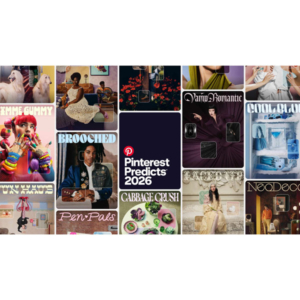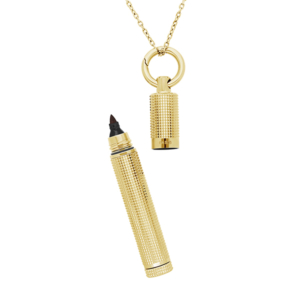
Last March, as it was dawning on the world just how seismic the COVID-19 pandemic would be, I wrote a blog urging people in the jewelry industry to hang on. Reflecting on past crises, like 9/11 and the 2008 financial meltdown, I said: “If I could go back in time, and give myself advice as I lived through those two crises, I’d say, ‘Things will get better.’ ”
While nothing I put in that post was wrong, in retrospect it was rather naive. It assumed COVID-19 would be over in a few months. I didn’t imagine the human toll this virus would take, nor how long this would drag on. It’s one year later, and I’m still working from home, and likely will for a lot longer.
The big question is, after a year of radically changing our habits and lifestyles, how much of these changes will become permanent, particularly with regard to retail?
“It’s like with the old videocassettes, you would press fast-forward, and you didn’t know where it would stop,” De Beers chief brand officer David Prager told me last year. “But you just knew it would be far ahead of where you were. When the world gets out of this, we will be in a different place.”
Clearly, some of the changes are here to stay, like curbside pickup, delivery, and greater focus on online.
“This really gave us a kick in the butt,” Holly Wesche, owner of Wesche Jewelers in Melbourne, Fla., told me for a JCK Pro article. “[The shift toward online] was happening, we all knew it, but you know how we are in the jewelry industry: We take our time.… We did have a website and we were working on it, but we weren’t in a big rush. But this made us get up to speed real quick.
“I always picked up my dry cleaning through the drive-through. But I never thought of adapting that for my business. Now, we see people using curbside pickup not just because of COVID, but because it’s convenient. Once people start using these tools, they understand the convenience of them.”
We also saw wide adoption of virtual consultations. Those, too, seem here to stay. We have known for years that most consumers start their journey online. Yet for a lot of stores, their websites were a one-way conversation.
But when you’re shopping for a complicated product like jewelry, people want guidance. If that guidance can have a visual element, that’s even better.
Here’s one habit I’m glad to have picked up: This crisis has showed me how important local and small businesses are to my neighborhood and my city. I hope I never take them for granted again. When I order a book or any object, I try to avoid Amazon and buy from a local store. I can’t always do it, but I always try. We all should.
Of course, Amazon is doing just fine without me. But I’m not the only one thinking this way. This was the first time that local retailers were listed as a top place to shop in the National Retail Federation’s Valentine’s Day survey.
And while this crisis has caused a huge jump in online sales, brick-and-mortar has proved more resilient than any of us would have thought. To quote hedge fund analyst Elena Burger:
[I]f your memory of the past year was erased, and I told you that a pandemic would rip across the world, rendering us all loyal supplicants to online shopping, what percent of sales would you assume e-commerce would be of overall consumption? Probably pretty high, right? I posed the question to some family and friends, and everyone guessed in the 50–80% range. The reality—a little over 14% of sales—is actually shocking.
The takeaway shouldn’t be “e-commerce is eating the world” it should be “despite lockdown, store closures, mass layoffs, and global logistics networks that rival militaries in terms of sophistication, e-commerce was less than 1/6th of sales in the U.S.”
Let’s not forget the concept of omnichannel isn’t just about physical retailers going online. It also works the other way, with online retailers increasingly opening physical stores. It’s telling that Blue Nile had plans for a big retail expansion pre-pandemic. And it’s sticking to them.
The word disruption has become tossed around so much it’s become meaningless. Yet nothing’s more disruptive than having to close your stores, and people being too afraid to leave their homes. Not everyone in the industry was able to adapt. But many were. Last year, we saw the number of store closings actually drop—which I never would have expected.
This year has also shown that people really like jewelry, even when they have no one to show it off to.
“What people really want [right now] is simple nostalgic joy,” Zoe Benyon, cofounder and director of jewelry brand Robinson Pelham, told the FT. “[In lockdown] you’re only wearing it for yourself—there’s no one to impress.”
Celebrity jeweler Michel Piranesi told the New York Post: “People got stuck in their homes and they just wanted to cheer up, so they bought jewelry.”
We have clearly benefited from spending shifting away from travel. But we’ve probably been helped by, as Wesche said, this big “kick in the butt.”
And while travel—traditionally a leading competitor for our category—may come back later this year, the economic forecast is looking quite good, and we will undoubtedly benefit from that. Goldman Sachs is now forecasting that gross domestic product will rise a staggering 11% next quarter, and that the economy will show strong growth for the rest of the year.
I don’t want to sound too cheery. We still need to take proper precautions. COVID-19 is still out there, and it’s still dangerous. And we should never forget that, since last March, we have lost so much, including over 500,000 people who will never be replaced.
But the industry has gained a lot too. It’s savvier, faster on its feet, maybe even a little stronger. I’m happy so many of you were able to hang on. And while we still haven’t received the all clear, we are now at a point where it really does look like things will get better.
Last year, I wrote that, after this was all over, people would be hungry for face-to-face contact. I still believe that. I can’t tell you how many people have told me that while they used to be tired of trade events, now they can’t wait to attend one.
I also said, “I hope to see all of you soon—in person.” That was true then. It’s even truer now. See you soon.
(Photo: Getty)
- Subscribe to the JCK News Daily
- Subscribe to the JCK Special Report
- Follow JCK on Instagram: @jckmagazine
- Follow JCK on X: @jckmagazine
- Follow JCK on Facebook: @jckmagazine







